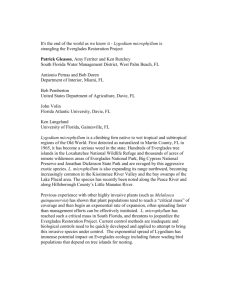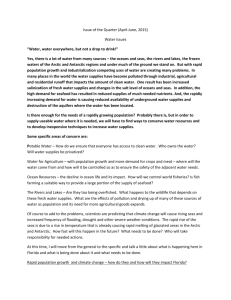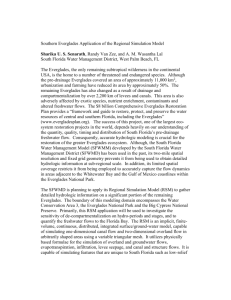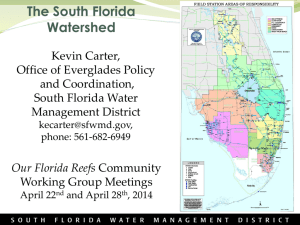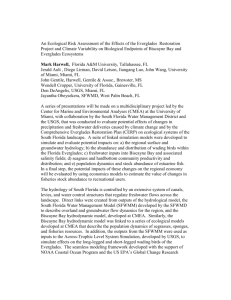A Total System Conceptual Ecological Model for South Florida
advertisement
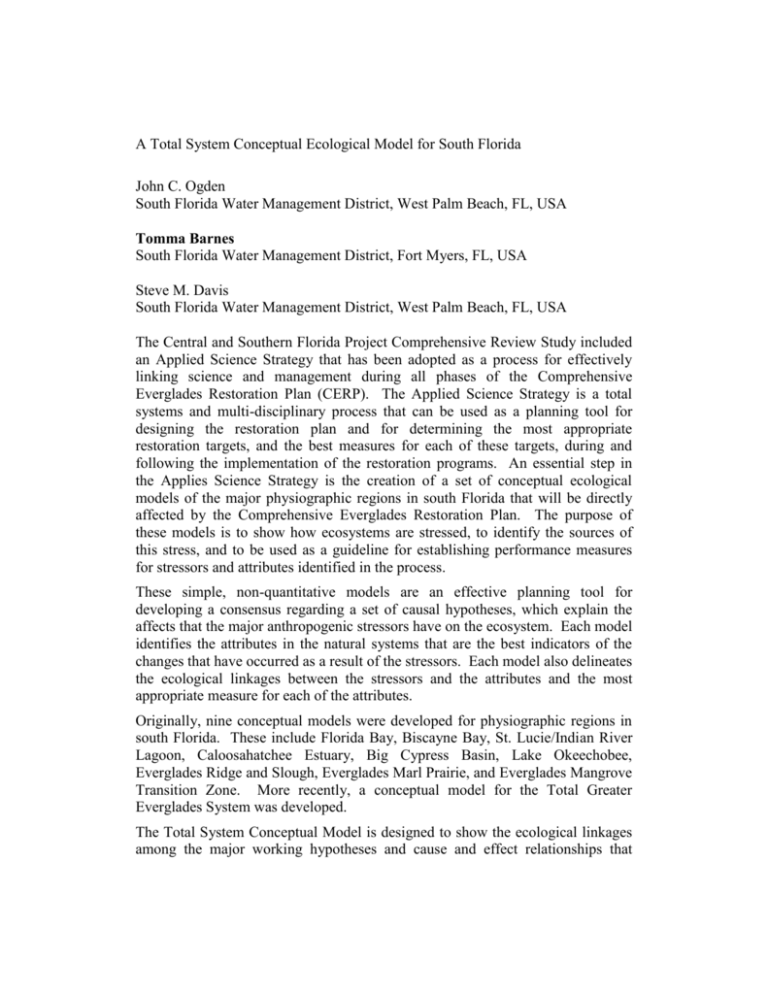
A Total System Conceptual Ecological Model for South Florida John C. Ogden South Florida Water Management District, West Palm Beach, FL, USA Tomma Barnes South Florida Water Management District, Fort Myers, FL, USA Steve M. Davis South Florida Water Management District, West Palm Beach, FL, USA The Central and Southern Florida Project Comprehensive Review Study included an Applied Science Strategy that has been adopted as a process for effectively linking science and management during all phases of the Comprehensive Everglades Restoration Plan (CERP). The Applied Science Strategy is a total systems and multi-disciplinary process that can be used as a planning tool for designing the restoration plan and for determining the most appropriate restoration targets, and the best measures for each of these targets, during and following the implementation of the restoration programs. An essential step in the Applies Science Strategy is the creation of a set of conceptual ecological models of the major physiographic regions in south Florida that will be directly affected by the Comprehensive Everglades Restoration Plan. The purpose of these models is to show how ecosystems are stressed, to identify the sources of this stress, and to be used as a guideline for establishing performance measures for stressors and attributes identified in the process. These simple, non-quantitative models are an effective planning tool for developing a consensus regarding a set of causal hypotheses, which explain the affects that the major anthropogenic stressors have on the ecosystem. Each model identifies the attributes in the natural systems that are the best indicators of the changes that have occurred as a result of the stressors. Each model also delineates the ecological linkages between the stressors and the attributes and the most appropriate measure for each of the attributes. Originally, nine conceptual models were developed for physiographic regions in south Florida. These include Florida Bay, Biscayne Bay, St. Lucie/Indian River Lagoon, Caloosahatchee Estuary, Big Cypress Basin, Lake Okeechobee, Everglades Ridge and Slough, Everglades Marl Prairie, and Everglades Mangrove Transition Zone. More recently, a conceptual model for the Total Greater Everglades System was developed. The Total System Conceptual Model is designed to show the ecological linkages among the major working hypotheses and cause and effect relationships that explain the important effects of system-wide stressors on the South Florida Ecosystem. These stressors, which include sea level rise, water management practices, and changes in land use patterns, certainly echo those seen in the set of regional conceptual models that were previously developed. Our purpose in creating the Total System Model was to identify the working hypotheses that explain the major ecological changes that have occurred at the larger scale of the South Florida Ecosystem. The Total System Model integrates these major, system-wide working hypotheses that are common to several or all of the regional conceptual models, along with ecological linkages that are working across multilandscape boundaries and therefore are not adequately addressed with a regional model. One additional question addressed by the Total System Model is whether there are major stressors and ecological effects that, because they are operating at such a large scale, have not been adequately characterized by the regional models. Some important stressors have been omitted from the Total System Model. This may be because the effects of the stressor on a region's internal ecology have specific, regional effects and are better characterized in the appropriate regional model.. Six stressors, altered hydrology, exotics and invasives, excess nutrients, mercury contamination, compartmentalization, and loss of spatial extent, have been identified for the Greater Everglades Ecosystem. Therefore, the Total System Model looks at the bigger picture, to pick up where regional models leave off, to look at the interactions among regional models, including the upstream and downstream effects of what happens across boundaries. Many of the attributes chosen as indicators of these system-wide events are similar to those seen in other models. Here, however, they indicate more broad scale effects. Five ecological attributes identified in the Total System Model include wading birds; endangered and keystone species; fish and invertebrate communities; upland and wetland vegetation; and aquatic vegetation. In CERP, the Total System Model will be used to create a new set of total system performance measures and to add a total system component to the Monitoring and Assessment Plan. In addition, it will provide the opportunity to simplify regional models by shifting certain system-wide issues to the Total System Model. Tomma Barnes SFWMD 2301 McGregor Blvd Fort Myers, FL 33901 239-338-2929 x7771 tbarnes@sfwmd.gov

